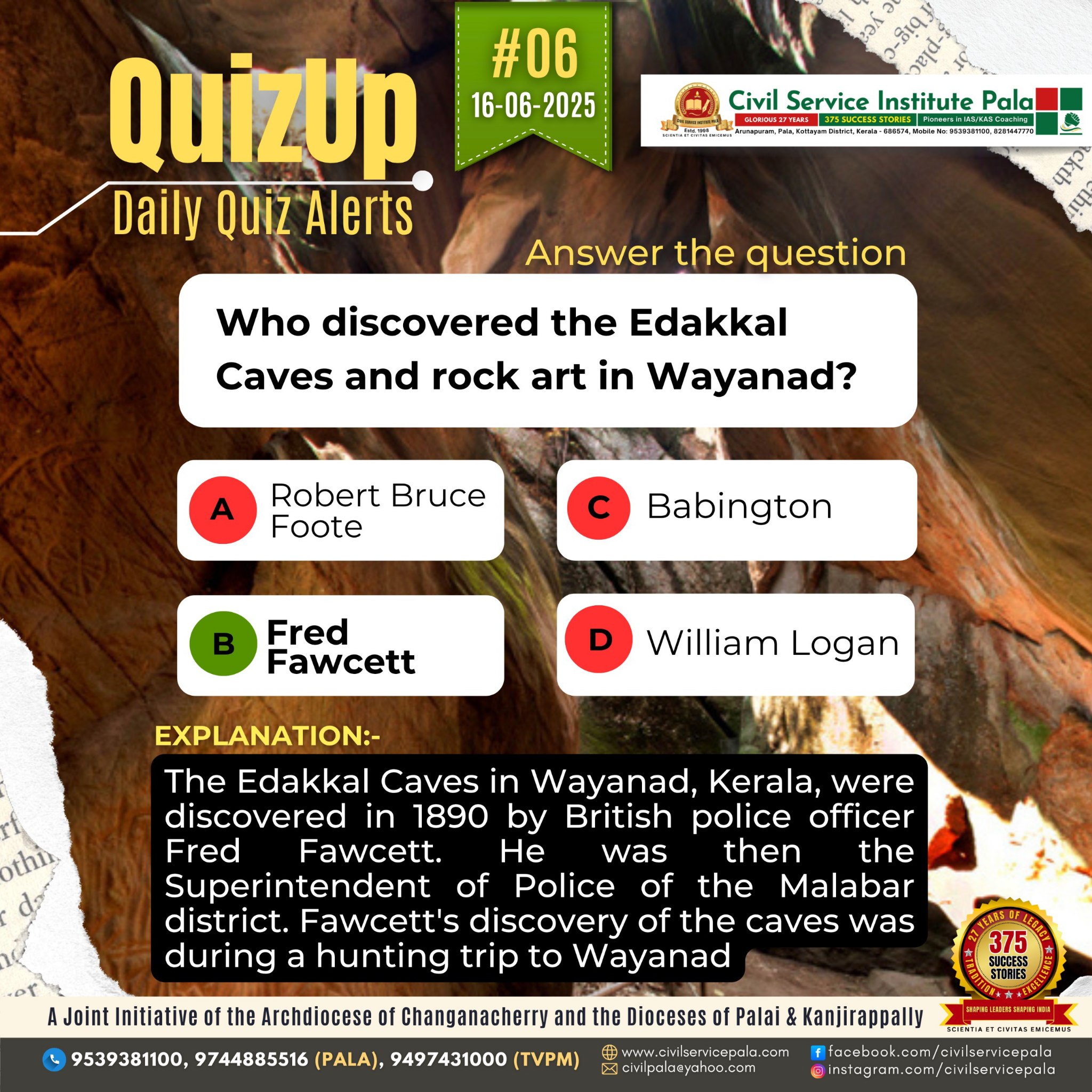
Edakkal Caves
The Edakkal Caves are a pair of natural rock shelters located in the Wayanad district of Kerala, India. Perched about 1,200 meters above sea level on Ambukuthi Hill, these caves are not actually caves in the traditional sense but clefts or fissures in massive rocks, formed by a split in a huge stone.
Discovery
The Edakkal Caves were discovered in 1890 by Fred Fawcett, a British police official serving as the Superintendent of Police in the Malabar district. During a hunting trip, he came across the caves and recognized their archaeological significance. Fawcett’s findings led to further exploration, marking Edakkal as one of the most important prehistoric sites in South India.
Rock Art
What makes Edakkal truly remarkable is its rock engravings, which date back to multiple time periods, ranging from the Neolithic (around 6,000 BCE) to the Iron Age (around 1,000 BCE). These are not paintings but petroglyphs—images etched into the rock surface.
Key features of the rock art include:
Human figures, including some with elaborate headgear.
Animal motifs such as elephants and deer.
Symbols, tools, and scripts.
Scenes that suggest a thriving, complex society with trade, rituals, and warfare.
The engravings suggest connections with other prehistoric cultures across the Indian subcontinent and possibly even Mesopotamia, indicating Edakkal may have been part of ancient trade or migration routes.
Cultural Significance
The Edakkal caves stand out as the only known place in southern India with Stone Age carvings. They provide rare evidence of human settlement, communication, and artistic expression in the region thousands of years ago. The site remains vital for understanding the early history of human civilization in the Indian subcontinent.



